#Frisia
Text
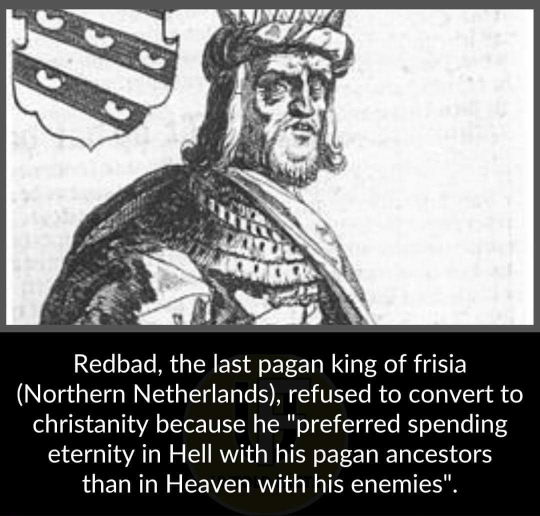
Redbad, the last pagan king of Frisia (Northern Netherlands) refused to convert to Christianity because "preferred spending eternity in Hell with his pagan ancestors than in Heaven with his enemies."
Based.
293 notes
·
View notes
Photo
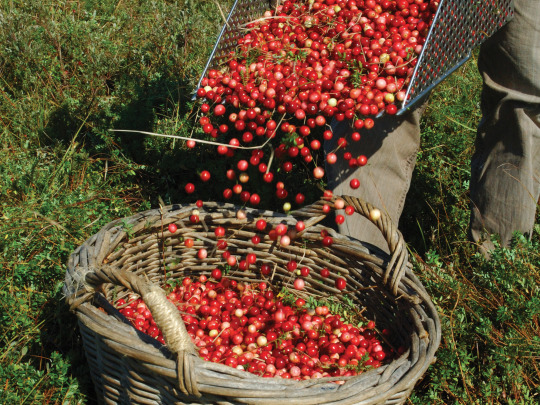
Cranberry harvest on Terschelling, the Netherlands
1K notes
·
View notes
Text
Archaeological things that made me happy 2

The Wijnaldum Fibula, a bow brooch from Great Frisia, was found plowed to bits. Metal detectorists and archaeologists spend years searching the fields of Wijnaldum trying to complete the brooch and to the world’s (and my) joy, the brooch was reassembled to its most complete form in 1500 years.
The garnet inlay originates from India, and two Dirham coins were found, signifying long distance trade with the East.
Just for the fun of it, can you spot Wotan’s face in the garnet inlay?
#Odin#Norse god#Wijnaldum fibula#Wijnaldum brooch#great Frisia#Frisia#Merovingian#Charlemagne#archaeology#history#indiana jones#archaeology meme#field archaeologist#field archaeology#metal detection#ancient arabia#Vikings#Viking#Wotan#germanic mythology#viking mythology#Norse mythology
192 notes
·
View notes
Text
Dorestad Fibula

The Dorestad Fibula (brooch) was found in the Dutch village Wijk bij Duurstede, the successor of the Early Medieval Emporium Dorestad.
Dated between 775-800, this brooch is classified as Frisian. Decorated with gold, garnets from East Asia, pearls, enamel and glass, this brooch belonged to an exceptionally rich merchant.
The brooch depicts the tree of life with leafs and fruits. The green inlay portray stylized bird heads.
RMO Leiden, Netherlands
Object nr. F1978/1.1,
Found in Wijk bij Duurstede-Utrecht, Netherlands.
#archaeology#museum#field archaeologist#field archaeology#Dorestad#emporium#emporia#Netherlands#Dutch#Germanic#Viking#Frisian#Frisia#Merovingian#Frankish#charlemagne#Merovingian archaeology#Viking archaeology#Viking mythology#tree of life
209 notes
·
View notes
Text
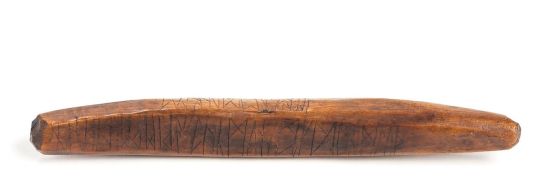
It's great to be able to show that runes were being carved in the Netherlands. This is one of the 23 currently known Frisian rune findings: the Westeremden (a location in the North-East of the Netherlands) yew stick, found in 1918 and dated 5th-8th century.
It can be seen in the Groninger Museum.
Made of Yew (Dutch: Taxus, or IJf) which is not a tree that generally could be found in this area. The inscription reads like a blessing or spell for luck/happiness. To me, this is Frisian galðr:
ophæmujiBAdaæmluþ
wimœBæhþuSA
iwioKuPdunale:
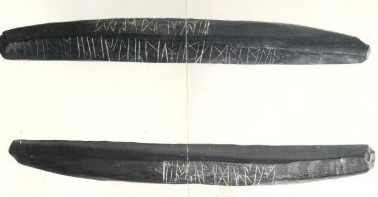

(Source: de Gruyter.)
Elmar Seebold (in 1990) reads:
ophæmu givëda æmluþ:
iwi ok upduna (a)le
wimôv æh þusë
Tineke Looijenga (in 1997) reads:
op hæmu jibada æmluþ :
iwi ok up duna (a)le
wimœd æh þusa
(Source)
Interpreted as something like:
luck (amluþ) stays (gibada) at home (op hæmu);
and (ok) at the yew (iwi) may it grow (ale) on the hill (up duna);
Wimœd has (æh) this (þusa)
Modern Frisians translate it into:
op de boerderij (heem) blijft voorspoed;
laat het groeien bij de ijf (taxus) op de terp;
dit is (eigendom) van Wimoed
(Source.)
Interestingly, this 5th-8th century Frisian Futhorc differs slightly from the more commonly known elder Futhark. (Context: the Elder Futhark in the Scandinavian areas transitioned towards the Younger Futhark in the 7th-8th century).
Here are a few interpretations by different writers:

By Parsons.

By Grimmsma.

By Terpen en Wierdenland.
#frisian futhorc#rune#yew#Amulet#galðr#groningen#netherlands#futhorc#5th century#6th century#7th century#8th century#northern iron age#Frisia#dutch
34 notes
·
View notes
Text
1942 Harley Davidson WLA
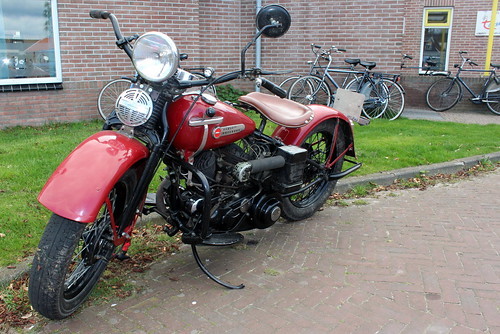

The Harley-Davidson WLA is a Harley-Davidson motorcycle that was produced to US Army specifications in the years during and around World War II. It was based on an existing civilian model, the WL, and is of the 45 solo type, so called due to its 45-cubic-inch (740 cm3) engine displacement and single-rider design.
The model number breaks down as follows:
W : the W family of motorcycles. Harley-Davidson (except in very early models) gives a letter designation for each model family. The W series at the time was the newest incarnation of the 45-cubic-inch (740 cm3) flathead motor, and was developed from the earlier R family 1932–1936.
L : "high compression", in the usual HD scheme. The "low compression" W model was only briefly available.
A : Army. The company would also produce a model to the slightly different specifications of the Canadian Army, which would be named the WLC. The WLCs differed from WLAs chiefly in the use of some heavier components, usually Big Twin parts, as well as Canadian blackout lighting.
Harley-Davidson began producing the WLA in small numbers in 1940, as part of a general military expansion. The later entry of the United States into World War II saw significantly increased production, with over 90,000 being produced during the war (along with spare parts the equivalent of many more). Unusually, all the WLAs produced after Pearl Harbor, regardless of the actual year, would be given serial numbers indicating 1942 production. Thus, war-time machines would come to be known as 42WLAs. Many WLAs would be shipped to allies under the Lend-Lease program. The largest recipient was the Soviet Union, which was sold over 30,000 WLAs.
Production of the WLA would cease after the war, but would be revived for the Korean War during the years 1949–1952.
Posted by Davydutchy on 2017-04-10 15:21:51
Tagged: , Harley , Davidson , Harley-Davidson , USA , motor , motorcycle , motorbike , bike , motorfiets , Motorrad , Krad , WLA , St.Nicolaasga , St.Nyk , Fryslân , Friesland , Frisia , Frise , April , 2017
Read the full article
#2017#April#Bike#Davidson#Friesland#Frise#Frisia#Fryslân#Harley#Harley-Davidson#krad#Motor#Motorbike#Motorcycle#motorfiets#Motorrad#St.Nicolaasga#St.Nyk#usa#WLA
22 notes
·
View notes
Text
History Shorts: 10

This is a zweihänder sword, next to what I can assume is an archeologist analyzing his find.
These large two-handed used swords were used primarily in the late 1400s to the mid 1500s. They are not to be mistaken with the Claymore, which is different both in origin and size. The claymore is longer than the zweihänder.
They are European of course, where a trend had followed in creating massive swords. The zweihänder was found mostly used among Swiss and German mercenaries. A notable group being the Black Band, a massive German mercenary group.
The zweihänder ranged a good amount in size, usually always being over 1.4m (4′7″ ft.) long and weighing at least over 2 kg (4.4 lbs). There were much larger ones recorded going even up to 2.4m (8ft) long, and weighing around 6 kg (15lbs). Their size is why they must be wielded with two hands. The larger ones are for ceremonial practices.
The original wielder of the sword depicted in the picture above was Grutte Pier, a Frisian rebel and a warlord pirate. Also known as Pier Gerlofs Donia.
Grutte Pier was known for his superhuman strength. That name is simply a nickname meaning Great Pier. It is written that Pier was so strong he could behead several men at once with a single swing of sword, and bend coins with even his middle finger.
He was not the only unit like that known in his time period.

#dutch history#frisian history#frisia#frisian#zweihander#zweihänder#german history#1500s#1400s#16th century#swiss history#history#swords#weapon history#military history#dark ages#medevial#medevial era#weapons#big sword#grutte pier#pier gerlofs donia
5 notes
·
View notes
Text
The Shieldmaiden’s Honour – Map Reveal
The Shieldmaiden’s Honour is done and dusted, ready for release. I’ve moved it a week ahead, so it’ll be available for purchase a week from now. About time, then, to show off the map created for the book.
It’s the coasts of the English Channel and the North Sea this time: the marshes of the Ikens, and the swamps of Frisia, beyond the Empire’s borders – Netherlands and Belgium, from the dunes of…

View On WordPress
#almere#amazon#ancient gaul#ancient rome#belgium#britannia#france#frisia#gaul#kindle#London#map#map reveal#netherlands#publishing#roman britain#self-publishing#shieldmaidens honour#shieldmaidens pride#song of britain
2 notes
·
View notes
Text
I can’t wait until Frisian people unify and decide “Fuck this”
We built these countries and we have all the right to fucking burn them down.
#Frisian#Just a random thought your local frisian nationalist had this morning#Frisian nationalism#Frisia#Germany#The Netherlands#Frisian protests#Frisian freedom
2 notes
·
View notes
Text

The Dorestad Fibula (c. 775-800), Netherlands
1 note
·
View note
Text

East frasia, Germany
0 notes
Text
7th November
St Willibrord’s Day

Source: The Daily Office website
Today is St Willibrord’s Day. Willibrord was Archbishop of Utrecht and is the patron saint of The Netherlands. He was also a notable missionary who spent much of his time converting the pagan Frisians. Despite his Dutch connections, Willibrord was actually born in Yorkshire and educated in Ripon, but he was buried in Echternach, now in Luxembourg. A strange dance is performed today by the clergy in Echternach called the Willibrord Wiggle, a peculiarity that can be traced back more than 400 years.
Hiring Fairs were still in full swing in early November. They died out with the end of domestic service after the First World War, but their days were probably numbered anyway due to their propensity towards drunkenness and violence. Reverend Eddowes of Driffield described his local fair in a pamphlet in highly critical terms in the late nineteenth century: ‘Hiring Fair! The very name reminds us of scenes which we would willingly forget forever - the reeling men and drunken women… profanity and blasphemy and profligacy unchecked… every restraint seems loosened, and every feeling of shame forgotten…’
0 notes
Text
Saint Boniface - World History Encyclopedia
https://www.worldhistory.org/Saint_Boniface/
View On WordPress
#5 May 719#716#Adescaneastre#Anglo-Saxon#Bavaria#Carloman#Celtic#Christianity#Donar#Dutch#England#Essex#Frankish Church#Franks#Frisia#Fulda#Germany#Heilige Bonifatus#Hesse#Jupiter#Martyr#Netherlands#Oak Tree#Pippen III#Pope Gregory II#Reformation#relics#Skull#St. Boniface#Synod
0 notes
Text
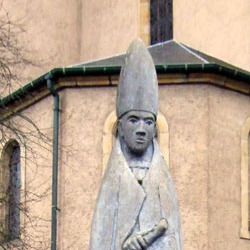
St. Willibrord
More Saints of the Day Novembre 07
St. Achillas
St. Amarand
St. Amaranthus
Bl. Anthony Baldinucci
St. Auctus
St. Blinlivet
St. Cumgar
St. Engelbert
St. Ernest
St. Florentius of Strasbourg
St. Gebetrude
St. Hieron
St. Hyacinth Castaneda
St. Melasippus
Bl. Peter Ou
St. Rufus of Metz
St. Tremorus of Brittany
St. Willibrord
#catholic#saint#saints#blessed#martyr#martyrs#pray for us#moresaintsoftheday#stwillibrord#ireland#netherlands#frisia
0 notes
Text
Natural Amulets

Spherical amulets made from natural stones such as amber or quartz crystals are more rare than brooches and beads, yet are a striking example of early medieval people more so being animistic than religious.
Animism is attesting power to natural and inanimate objects such as stones, rivers, trees and rocks.
Worn by women, they were most likely part of a string glass bead necklace, hanging between two figurative brooches. The stone is most often worn in a silver frame.
Rijksmuseum van Oudheden Leiden, The Netherlands
Museum nr. Rh 079 D
Found in: Rhenen-Utrecht, The Netherlands
#frankish#merovingian#viking archaeology#archaeology#carolingian#charlemagne#field archaeology#viking mythology#germanic mythology#merovingian archaeology#frisia#odin#wodan#animism#paganism#pagan#witchcraft#chrystals#necklace#viking necklace#netherlands#germanic folklore#germanic tribes#viking history#norse mythology#anglo saxon#field archaeologist#frisian#vikings#viking
44 notes
·
View notes
Text
Tags related to The Netherlands/Frisia
Typically Dutch or prominent in Dutch (local) culture
Baðuhenna
Dutch
Dutch folklore
Franks
Frisian futhorc
Hunebed (D10, D32, D35, D36, D37, D42, D43, D50, D54)
Nehalennia
Noordzee-germaans
North Sea
Oudfries
Oudnederlands
Oudsaksisch
Polder
Trechterbekervolk
Vrouw Holle
Wadden
Windmill
Locations
The Netherlands (Nederland, Holland)
Drenthe
Flevoland
Friesland
Frisia
Gelderland
Groningen
Limburg
Noord-Holland
Noord-Brabant
Overijssel
Utrecht
Zeeland
Zuid-Holland
2 notes
·
View notes